Did an ancient Greek party girl get off on a capital charge because she flashed the judge? Or was this story just an excuse for artists to get away with painting bare breasts? This week, we dig into trial records, archeological evidence, and ancient gossip to try to get a sense of the woman behind one of history’s spiciest trials.
Content note: This episode is about a historical figure who may or may not have been a sex worker. Some of the sources we quote from translate her profession as “prostitute”–academic translations tend to lag a bit behind commonly accepted language.
Featured image: A 1904 image of Phryne baring her breasts to the court. This version shows Phryne as pretty smug about the whole situation and the judges as guys who seem pretty delighted to see some good tits. One of the things I find interesting about this painting is that she seems to be removing her own garment proudly; other paintings have a very different take on her emotions in this moment. (Image source)
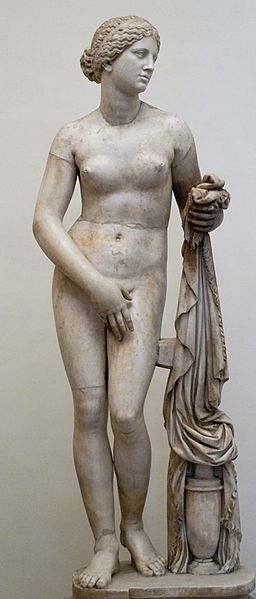
A copy of the Aphrodite of Knidos statue by Praxiteles. The original has been lost, but we can see what it looked like from Roman copies. Note the similarity of the pose to Botticelli’s famous The Birth of Venus. (Image source)

A 16th century image of Phryne partying at a symposium. I love the anachronistic instruments and outfits in this picture–artists and authors at this time often didn’t share our sense of anachronism and would depict the classical period as full of modern clothing, technology, and sometimes even guns. (Image source)
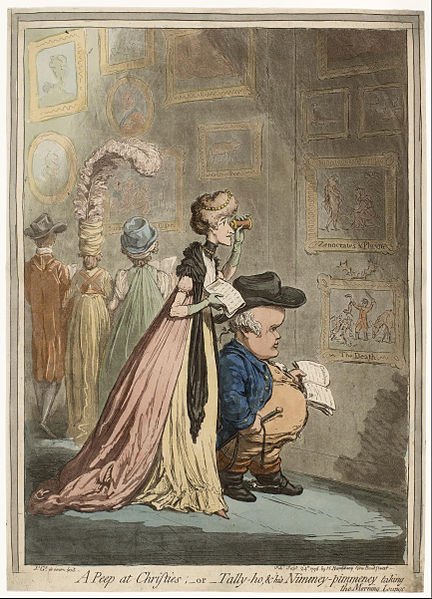
A cartoon from the late 18th century making fun of supposedly proper, upper-crust people going to a high-class auction house to ogle naked paintings of Phryne. (Image source)
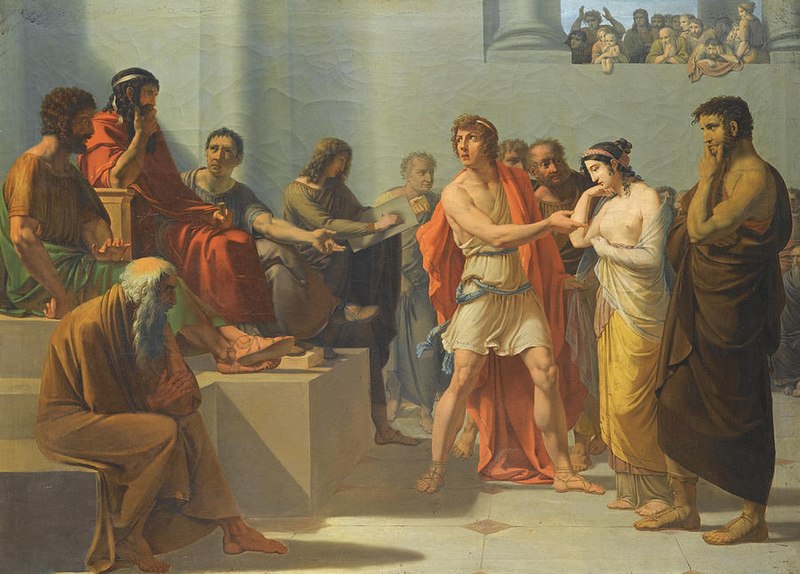
A 19th century of Phryne before the Areopagus. In this version, she seems more sad or demure about the situation. (Image source)
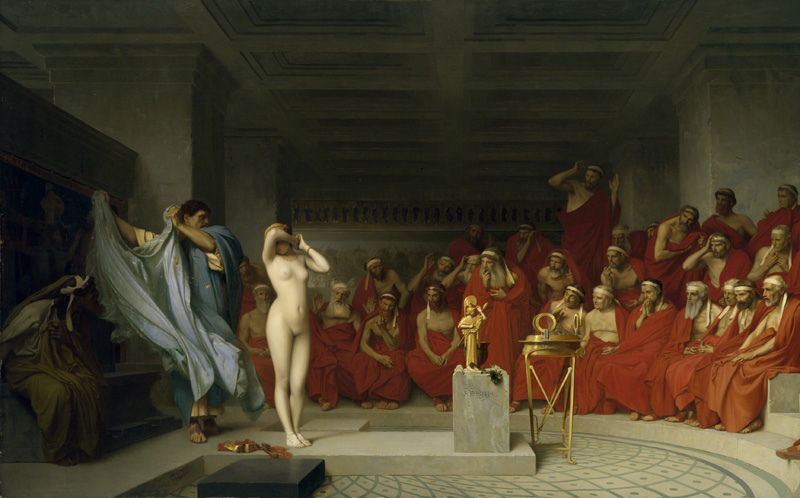
A mid-19th century painting of the same situation, in which Phryne seems ashamed as her garment is dramatically torn away by her defense team. This painting is a great example of a painter using a historical subject as an excuse to center a painting on a hot naked babe. (Image source)
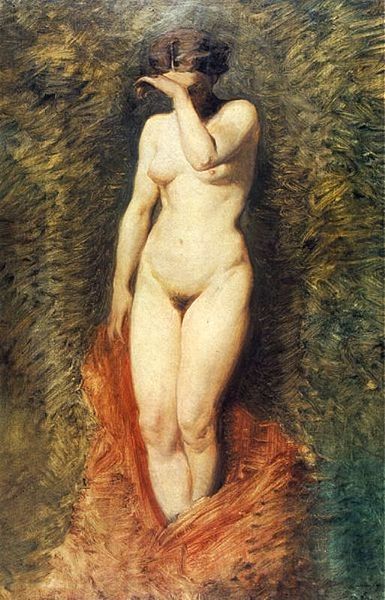
Another mid-19th century painting showing Phryne looking ashamed. Interestingly, this painting doesn’t show the court or even any Greek-looking background or accessories at all. You could make an argument that the artist chose to paint it this way to focus on Phryne’s sense of isolation and vulnerability; you could also make an argument that at this point in art history it was just very easy to use Phryne as an excuse to paint a naked woman. (Image source)
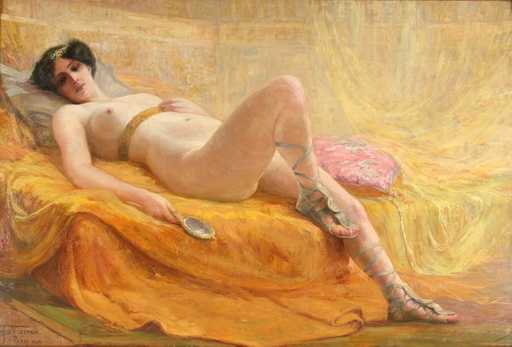
An extremely sultry early 20th century painting of Phryne. (Image source)
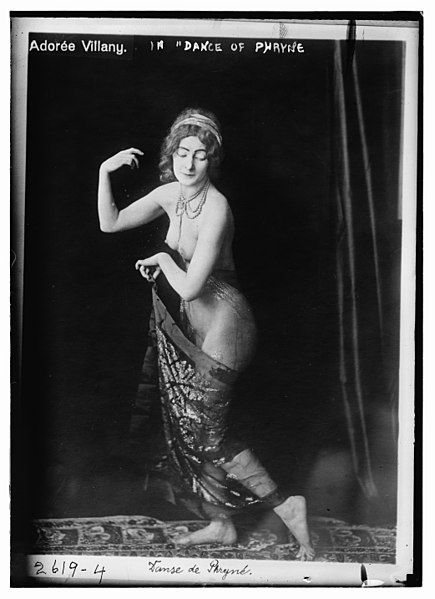
An early 20th century photograph of a performance artist named Adoree Villany performing the “Dance of Phryne.” Interestingly, Villany was prosecuted for obscenity in 1911 because she wore revealing outfits on stage, but the jury found that her performances were in the “higher interests of art” because she referenced historical themes. So, while we’ve made fun of artists who use Phryne’s name as an excuse to paint nude women, claiming your art was a depiction of a historical event could be a valuable technique for evading censorship during repressive times. (Image source)
Charities
Feel moved to donate? Here are some charities that fit the theme of this week’s episode:
Sources
- Athenaeus: The Deipnosophists
- Hyperides and the Trial of Phryne
- Patterns of Persecution: ‘Witchcraft’ Trials in Classical Athens
